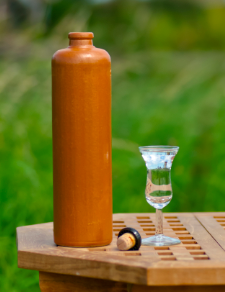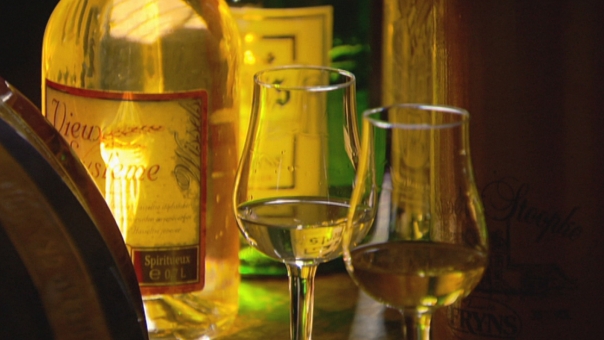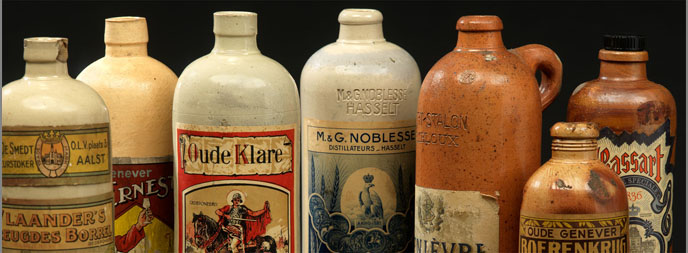“It makes the nicest people incredibly mean and nasty, gin makes for a mean drunk.” A renowned figure from Bangkok’s hospitality world once told me. A somewhat unsound statement since gin is in essence nothing more than flavored vodka, which is widely believed to be one of the safest alcohols.
This false idea that keeps surviving probably finds it origin in the British gin craze, which took place in the first half of the 18th century. Gin consumption in Great-Britain rose to dramatically high levels causing public unrest and a government crack down. It’s a historic phenomenon that many people are familiar with yet few people know that it was the Belgians and the Dutch who were responsible for bringing gin to England.
In the 14th century an Arabic invention called “al-inbiq” makes its way to Europe. It was bastardized into alembic but today it’s better known as a still. This new technology was used to distill “aqua vitae” or “life giving water”, a medicine that was taken by the drop to cure all sorts of ailments and diseases. The drink was distilled from beer and other fermented beverages and often juniper berry, considered to be medicinal, was added to improve the benefits of the “aqua vitae” even more.
An early Flemish text also mentions that it makes people forget their sorrows and makes the heart cheerful and brave. It apparently didn’t take long before people started consuming it in quantities larger than drops. Another Flemish text from a distillery handbook dating from 1582 mentions the drink as “aqua juniperi” or juniper water, establishing gin’s origin in Flanders. The locals however call it “jenever”, Dutch for juniper.
A couple of wars involving the Spanish, the Dutch and the British spread the drink to the Netherlands and England. In England jenever (sometimes spelled genever) becomes gin and evolves into the spirit we know today, a strong liquor aromatized with a blend of herbs and spices.
As the British conquered the world on G&T’s the Belgians and the Dutch kept producing their jenever. It survived the ages and some extremely severe anti liquor laws (Belgium had it’s own jenever craze in the nineteenth century) and is still produced and enjoyed today. Recognized for its historic and cultural contribution the European Union protected jenever with 11 AOCs of which most are exclusive to Belgium. The Netherlands, southern regions of Germany and northern regions of France hold some appellations as well.
Depending on the variety, the spirit itself is somewhat of a mix between gin, vodka and whisky. Traditionally jenever is made from a mixture of different cereals and malt. Much like whisky these are made into a beer after which they are distilled into jenever.
When it has a noticeable juniper flavor and contains at least 30% alcohol; it is called oude (old) jenever.
Nieuwe (new) jenever was developed around the First World War when grain became scarce and new technology allowed to produce high quality alcohol independent from its source. Cheap molasses from the sugar beet industry were being used to create most of the spirit in jenever with only a small part coming from malt and grains. There are no guidelines when it comes to the usage of herbs or spices. This jenever also needs to hold at least 30% alcohol and is quite similar to vodka.
Graan jenever is a jenever consisting of pure grain alcohol with an alcohol content of minimum 30%. Korenwijn is a form of graan jenever made from at least 51% malt and containing at least 38% alcohol.
Nowadays many Belgian and Dutch producers also produce fruit and cream jenevers. These are jenevers that contain around 20 to 30% alchol and are flavored with certain fruits or creams. These jenevers are quite sweet and are more similar to liqueurs.

These are some of the main varieties but there are plenty more, with some unique jenevers being exclusively produced in certain villages and regions.
Jenever is typically served cold in small shot glass or a small tulip holding around 5 cl. The glass should be filled to the brim, overflowing a little. As mentioned earlier the flavor can range from vodka to whisky to gin, depending on the variety.
For a long time the spirit wasn’t known at all outside of Belgium and the Netherlands. Because of a greater interest in craft spirits it’s gaining some popularity in the United States. Perhaps it’ll make it’s way here, and if not, you have a great excuse for a trip to Europe.
Cheers.



 0
0